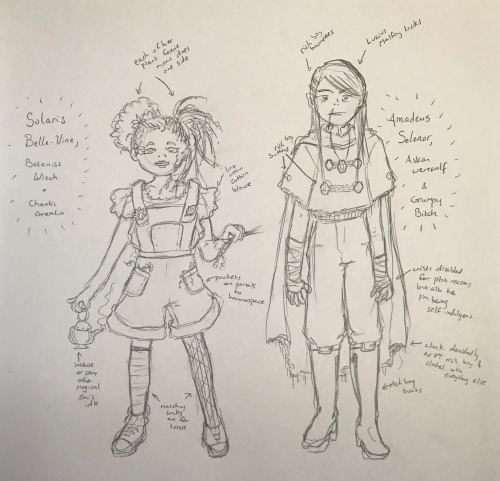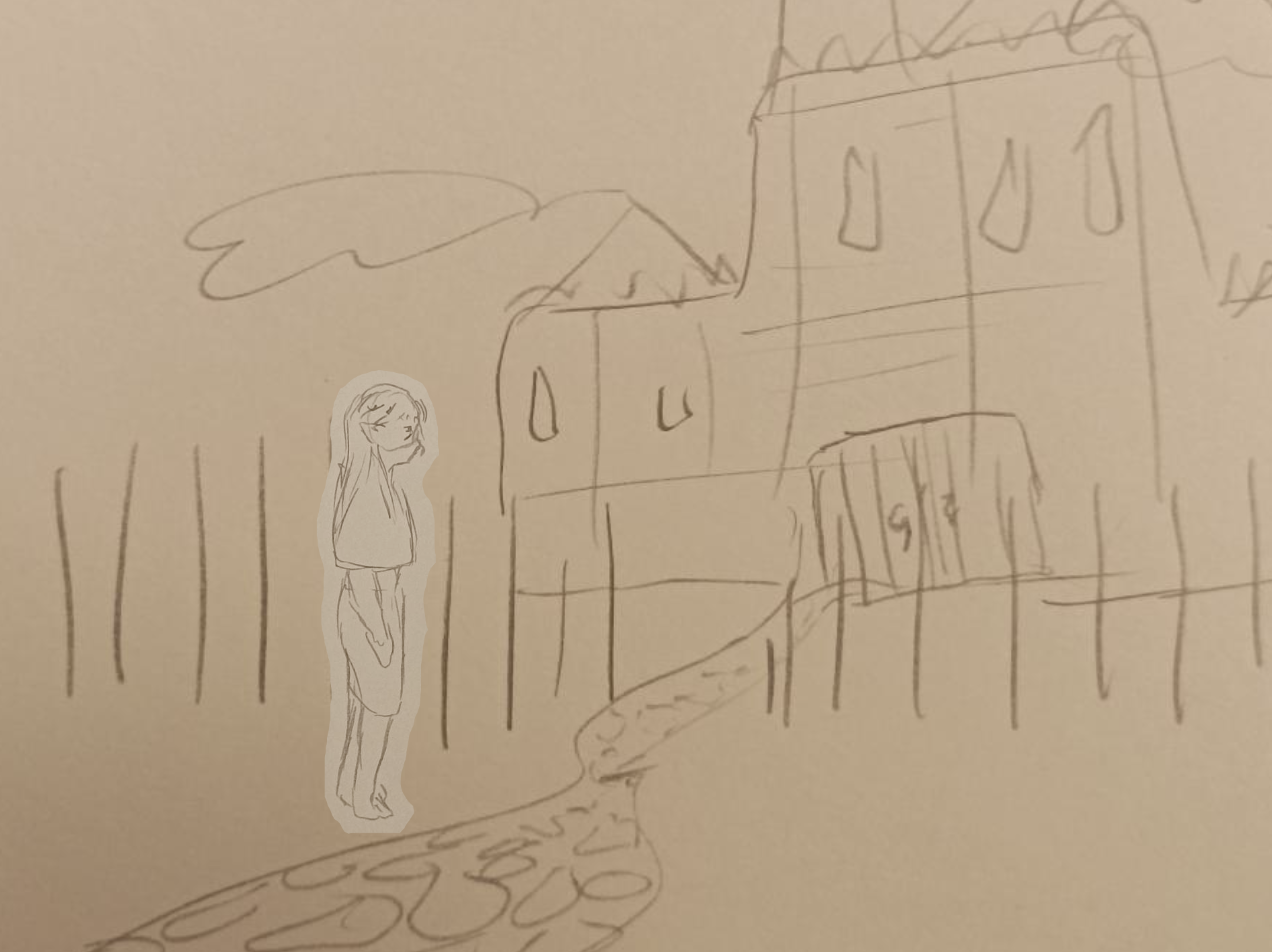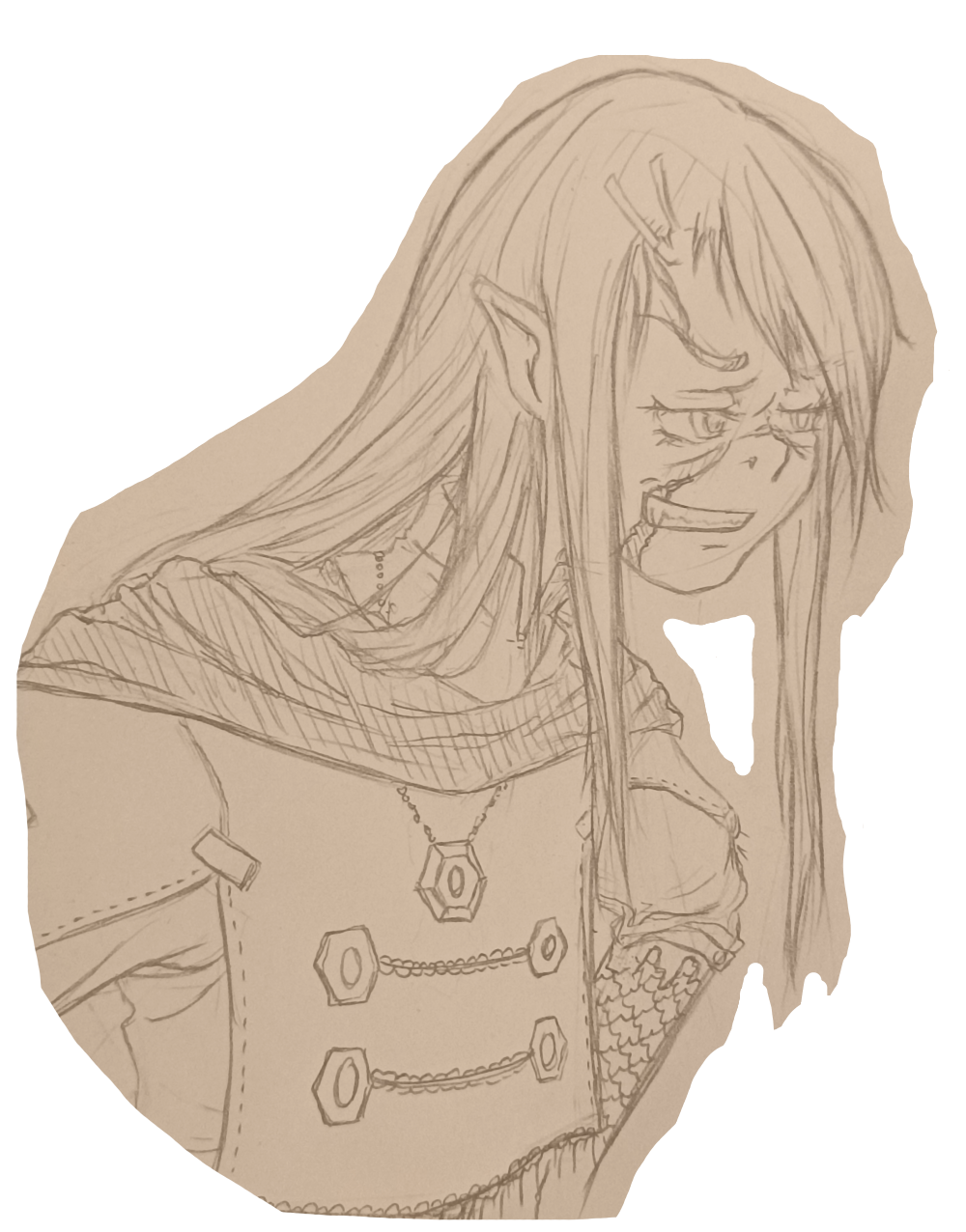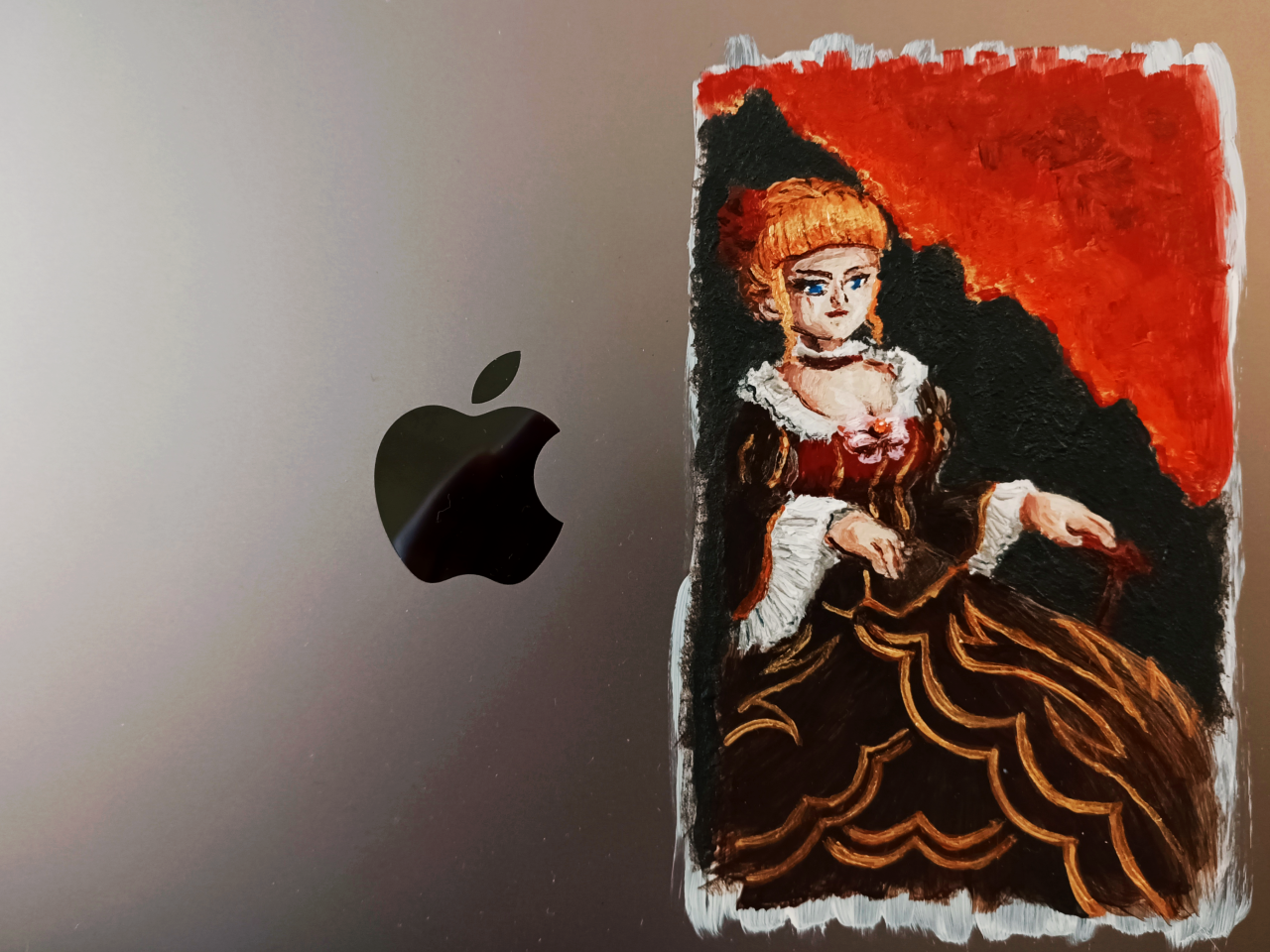Demo is Released!
Well, as of this past Saturday, the demo for Amadeus is live. I hope it's a good introduction to the world, story, titular character, and general atmosphere/ambience of the game.
Over the next year, I'm going to be shifting my sights toward getting the full release of Episode 1 ready by next summer. I'm planning to post at least monthly long-form development updates, both here as devlogs on the itch.io project, as well as posts on a dedicated Tumblr. I'm considering a newsletter, but that hasn't happened yet - in the event it does, I've created a Linktree to track all of the resources relevant to the ongoing development of Amadeus. Give this a bookmark and check back: https://linktr.ee/amadeusgame
Without further ado.... the first update about the ongoing making of Amadeus! Or, in this case, a retrospective on making the demo. If you're curious about how this project started, and how various inspirations and circumstances helped me see it through to a released demo, give it a read!
This one is long, so if you'd rather skip it, you're not missing anything but context on what's already been done. Future devlogs will be shorter and have more news looking forward to the complete game.
DEVLOG 1: From Concepts/Ideas Into An Actual Demo
Amadeus the character has existed in my brain for several years, now. Solea - who is mentioned in the demo, but has not yet made an appearance - was conceptualized at the same time, but she was originally named Solaris. I changed her name because it felt strange to have both main characters' names end with the same sound. Now that it's changed, I think Solea fits her better.
Below are the first sketches I made of these characters. It's interesting how little Amadeus changed, but Solea on the other hand is almost unrecognizable. Her characterization changed so much that I felt she needed a new design to accompany it. As for what that design is... that's something to be revealed later! I think she's an incredibly compelling character, and I can't wait for everyone to meet her.

What motivated me to turn these characters into protagonists of an actual, real video game, was a series of concurrent Things during my second year as a grad student studying music composition, last year. At the time, I was:
- Taking an elective course on C#/Unity, and learning how to Actually Make A Game
- Writing a music piece for solo marimba and electronics (for a different course), and using Professor Layton music as inspiration
- Thinking about a particular scene I had just come up with involving Amadeus
#2 is extremely relevant here. There was one evening when I was listening to a WIP of the marimba composition I wrote, and realized it evoked the exact kind of melancholy that might fit my story - so, as a form of fun procrastination, I played the track back on loop and sketched out a title screen for Amadeus's story in a small notebook.

Yep... the very first thing I made for this game was a title screen. Not exactly the conventional way to do things. (That marimba piece eventually turned into "Spellbound Mischief," the BGM track during the largest interactive/investigation scene in the demo. It was greatly inspired by the "Kodh" BGM in Professor Layton and the Azran Legacy, and "Bewitching Puzzles" from Professor Layton vs. Ace Attorney.)
Meanwhile, in the Unity class, I had just learned how to make a very basic title screen with a button to proceed to the game on it. So I opened a new instance of Unity, imported a phone camera picture of the drawing I did as a title screen asset, and made a "proceed to game" button that deactivated the title screen. I went ahead and put the in-progress version of the marimba piece as background music while I was at it.
And so the development of Amadeus began.
The very first build was made in one weekend, after I had finished my actual Unity/C# homework for the week, and wanted to apply what I had learned to building a game. Unfortunately, a game needs art assets. I found that it was incredibly difficult to motivate myself to work with pure greybox assets, so I sketched up very placeholder-y assets (a background, a walk cycle) and played around with them. As a visual artist, I find it easier to work in pencil and paper than digitally, so I sketched the assets in the same notebook as before.
Behold the glory of Prototype Amadeus:

I ended up building out a very rough skeleton version of the first scene in the demo, almost exclusively using Unity buttons as functionality, because that was what I understood best at the time. The portraits for Amadeus and the Witch are used in the final game, as well as the hand sprite and the door scene (all of which I put considerably more effort into than the placeholder walk cycle and manor, seen above.)
...In fact, if you're REALLY bored, the prototype still exists here on itch.io: https://arcanaxix.itch.io/amadeus-prologue-demo (password is "werewolfdepressionsim").
If you're not that bored, you can hopefully still appreciate how much better the released demo version of the text UI looks, compared to this:

At this point, the professor of my Unity course introduced us to our final project: we were to create a Game Design Document for a game, a timeline with finishing major benchmarks to complete the game as proposed by the day our final project was due, and then have a fun party where we would all play each others' games. The game didn't have to be anything very involved at all (it was music school, expectations were not very high), but I was getting excited about actually making a game with MY CHARACTERS, and I wanted to use this assignment to build a playable point-and-click chapter.
I also wanted to learn how to try and code a drag-and-drop puzzle mechanic, not just for this game, but also to try and help with the ongoing development of another exciting project I am part of (Project DuskPuppy). At any rate, I used the final project of this class to build a very janky "chapter" of Amadeus.
I learned so much working on that, and at the end of it, I had something that was Technically Playable, an absolute nightmare in terms of user experience, and in which half of the assets were scribbles. But I shared it with friends, and one of them gave me the following feedback, which (thanks ZeroJanitor) basically directed my continued development of the demo:
- "i love the whole tone of this game, the paper cutout sprites and somber music set a really cool tone, which compliment the character dialogue and theming really well! also it functions from start to finish which is always nice"
I'm including this because I think it's important for people to know just how much their comments can influence and motivate creators. Hearing just one person say that the paper sketch visuals - which I was using originally NOT out of any aesthetic direction, but literally just because I personally find it easier to draw assets on pencil and paper, and needed assets to implement - set an interesting and unique tone? Well, that settled it! I decided to double down on the pencil sketches from then on, and have used the same notebook that I sketched the original title screen in to draw every single art asset in the game.
This has come with its share of difficulties - a couple of the sprites I needed to entirely re-draw, because they were drawn at a different scale in my notebook, so the line thicknesses didn't match up with the other sprites. This would have been much easier to tweak digitally, but for pencil-on-paper, I had to just start over.


The second version is an improvement anyway; but I ended up using the "rough" version as an in-between frame in an animation, and by sheer luck, it happens to flow pretty well. So the original still made it in after all!
Anyway, that all came later -- at the end of 2022 I simply had a technically playable version of the game that was extremely rough and was mostly held together with Unity buttons deactivating and activating things, but it was Enough of an accomplishment that I started to feel like I could see this through into a real release.
I had learned:
- The basics of how C#/Monobehaviors work, and enough of an understanding to be able to look up answers and resources for further learning
- How to make a game design document and break a HUGE task like "make a game" down into every single small task within it, and prioritize/schedule those to get something made
- That no matter what you will never actually finish everything on time, and to make peace with that
(Regarding Point 3: my original script for the movement could not handle the upper limit of movement on a screen being anything except a horizontal line, so for the scene with the grave on a hill, I just.... rotated the camera and Amadeus' sprite. I figured out a more elegant solution later, but sometimes, deadlines mean you have to slap on a band-aid that sort of works!)
And, crucially, I had the OK from my professor to continue asking him code and Unity questions after the course was finished, with the caveat that he would respond when he had the time. This is probably the only reason I actually finished the Amadeus demo. Being able to ask for help when you need it is invaluable.
The next important thing that happened was over winter break I spent 2 weeks obsessively binge-reading the visual novel Umineko When They Cry. This was, I cannot emphasize enough, THE most motivating thing I could have possibly done. I was struck by several things: the insanely catchy soundtrack, the fascinating abstract sound design choices, and the CHARM of the MS-paint graphics. I had been surrounded by an obsession with big budget games at school and the idea that music that's too melodic or looping distracts from the game, but here was an example of a soundtrack with some of the catchiest tunes I've ever heard that hit incredibly hard during key narrative moments.
(The development of Amadeus had to take a brief pause while I painted the Golden Witch Beatrice on my laptop. But this means that the majority of serious development for Amadeus happened on a laptop with the Golden Witch Beatrice on it:)

Playing Umineko was exactly what I needed to completely throw the "soundtracks should support the game but not draw attention to themselves" value out the window. I had just played a masterpiece of a game in which the soundtrack hit you over the head with itself and it ruled so indescribably hard. Moreover, I had just played a masterpiece of a game in which almost all of the art assets were clearly drawn by one person doing their best, and it ruled so indescribably hard. So I doubled down on my values: I was going to create a game, with my own hand-drawn assets, and my own music, and it was going to be chock full of certified bangers if it was the last thing I did.
(May as well plug the soundtrack again while I'm on the topic: https://arcanaxix.bandcamp.com/album/amadeus-demo-original-soundtrack - I was studying music at music school during the majority of this game's development, so unsurprisingly, the music and sound are by far the most polished part of the whole affair.)
On the subject of music-! My last semester at school I didn't have a C# course giving me deadlines to work on the game, so I had to learn how to make my own deadlines. I drafted a calendar that originally scheduled the release of the demo for the end of May, 2023. I broke down the remaining tasks for a "complete" demo and scheduled them across the remaining months.
I did not follow this calendar at all. What I did do, was learn more about myself, and how to motivate myself. As you can see, the demo got released - so that means I managed to find a way to keep myself on track! And that was to take advantage of the fact that I was in music school, making music.
The whole project was started because of a piece of music I was writing. So it made sense to me to channel that, and to use my remaining time at school to create the perfect soundtrack, and to draw inspiration for the game itself from the music I was writing. Sometimes the game inspired my music, and sometimes it was the other way around! The point being: I still had deadlines, but they were music deadlines now, so I used that to motivate my development of the game.
A few examples:
- Spellbound Mischief: I worked alongside percussionist Jay Lee on this composition, and engineered the recording session. Because of that, I had the backing track and the marimba recording split into two different audio stems. This gave me an idea: what if I had the marimba stem fade in and out? The actual nature of the dynamic soundtrack in the scene changed a lot over development, but it was inspired by the fact that I had multiple audio stems to work with in the first place.
- Fugue ~ Interlude: The underlying composition of this piece is just what it says - a fugue. My final project in my counterpoint course was to write a fugue. The nice thing about fugues is that, once you understand the process, fugues more or less write themselves; this was written entirely divorced from Amadeus. So I wrote this fugue, and a different friend (thanks monstrman) gave me the feedback that it sounded like a Final Fantasy villain theme. I started thinking about it and I realized it had a ton of potential as a theme in my game... and much later, when I created the "Amadeus opens the notebook and thinks to himself" scene (added after playtester feedback that the narrative flow was hard to follow), I realized that I could use it there.
- Deal With a Witch: I knew I needed a witchy theme. I didn't have one. So when I got assigned to write a contrapuntal ABA form piece, I wrote one in minor on the harpsichord, and it felt suitably witchy. The clarinet was added after, and I don't even remember why I added it other than that I know someone who plays a mean clarinet. It was definitely the right call.
- A Riddle for Thee (Demo Version): I'm being a bit rude by including this one... this piece was written as a final project, a "Theme and Variations" for a course on 20th century harmony. However... this piece is going to manifest very, very differently in the complete game. I won't tell you what that is, but I will say this much, and hint at it very heavily: I hadn't quite figured out how to structure the complete narrative of Amadeus, other than that it would be in episodes; but writing this piece finally gave me a very compelling idea.
So I continued to work on the audio assets while I was in school, and resolved to have a mastered version of every track before I left campus for the last time. Once I graduated, I took the "end of May" deadline very seriously and focused on knocking out all of the remaining tasks to get the demo ready for private playtesters. Privately, I extended the actual demo release to the end of July, to give myself some time.
And here is where I have learned the most about keeping myself on track, as an individual with ADHD, no formal deadlines, and a lot of passion for this project:
Make your own deadlines, and make them ones with accountability.
I didn't follow my calendar because there was no accountability. What I DID do was finish a private-ready demo by end of May, because I had announced that it would be ready by end of May, and had a handful of people ready and excited to playtest it. And I finished the public version by end of July, because I had announced that it would be ready by the end of July.
You may be suspecting something... that's exactly what these monthly devlogs are going to be! I have a private calendar with benchmarks to meet in order to ship the finished Episode 1 of Amadeus by next summer, but the best way to be sure I meet those benchmarks is to write about them each month. This also helps keep you all informed too, and hopefully, excited about the project.
I know this has been a long write-up, but hopefully you gained some insight into how this project started, and how I as a musician-slash-multimedia-artist with one semester of C# under their belt managed to cobble together a game demo. And I hope you're as excited as I am about the complete game. I can't wait to make it so you can all experience it!
Amadeus: A Prologue For Thee (Prototype)
The moon Aska draws full.... are you prepared to make a deal with a witch?
| Status | In development |
| Author | ArcanaXIX |
| Genre | Visual Novel, Puzzle |
| Tags | 2D, Fairy Tale, Fantasy, Magic, Mystery, puzzle-game, Unity |
More posts
- New Demo Coming Friday - And New Game Page!Feb 19, 2024
- New Demo Progress UpdateJan 29, 2024
- 2023 Year's End Devlog + NEW DEMO RELEASE DATEDec 28, 2023
- November Devlog: Celebrating Invisible ProgressNov 28, 2023
- October Devlog: Substantial Progress and a New VisionOct 31, 2023
- September Devlog: Full Episode 1 Design FinalizedSep 26, 2023
- August Devlog: Re-Orienting Toward a Full GameAug 29, 2023
Comments
Log in with itch.io to leave a comment.
Great write-up! Lots of interesting bits in here and a great view into your process. Looking forward to the next update to the game and the next devlog…
Thanks so much for giving it a read! At the latest, next update will be at the end of August - and I hope to have lots to share by then. Stay tuned!